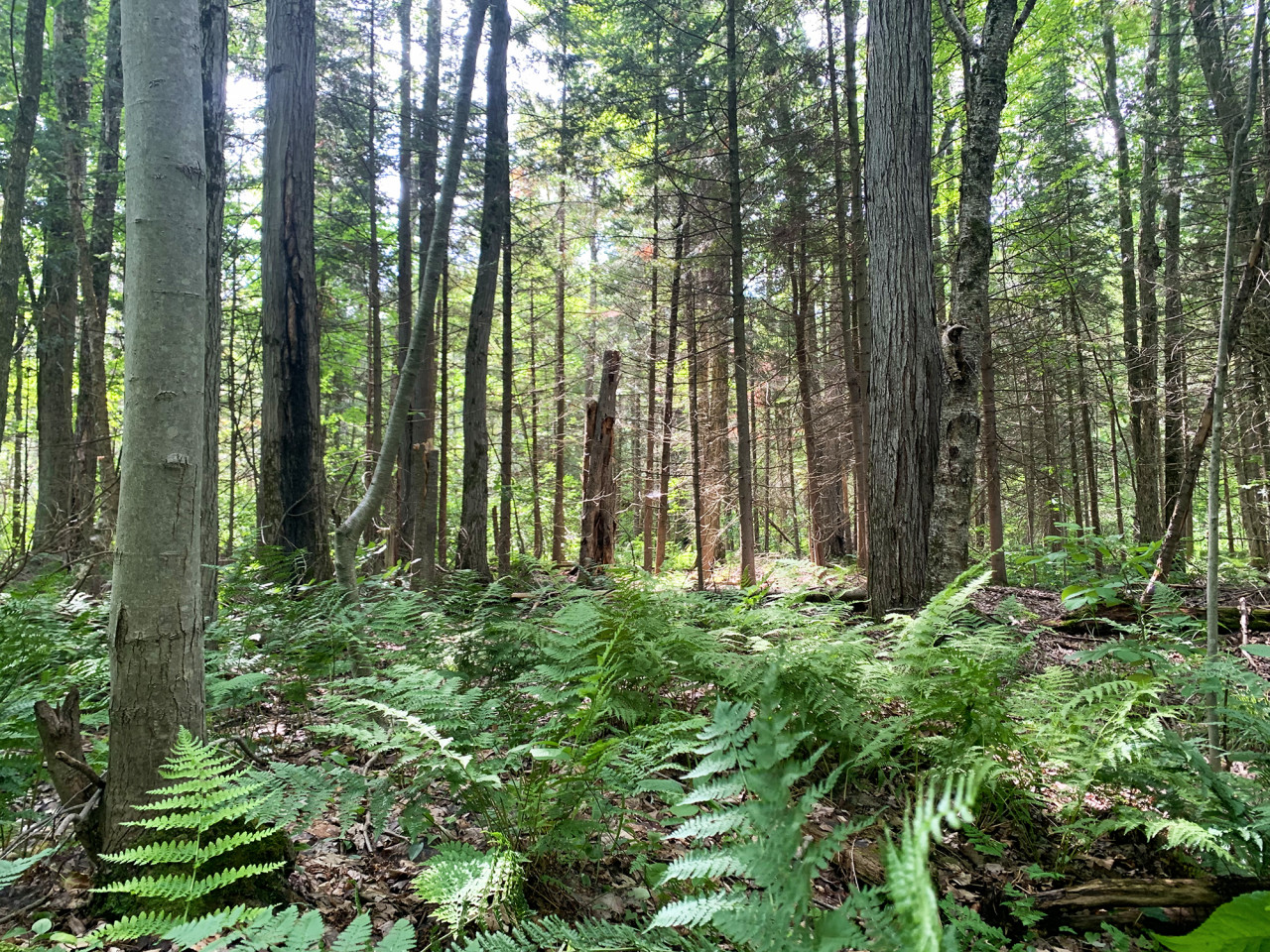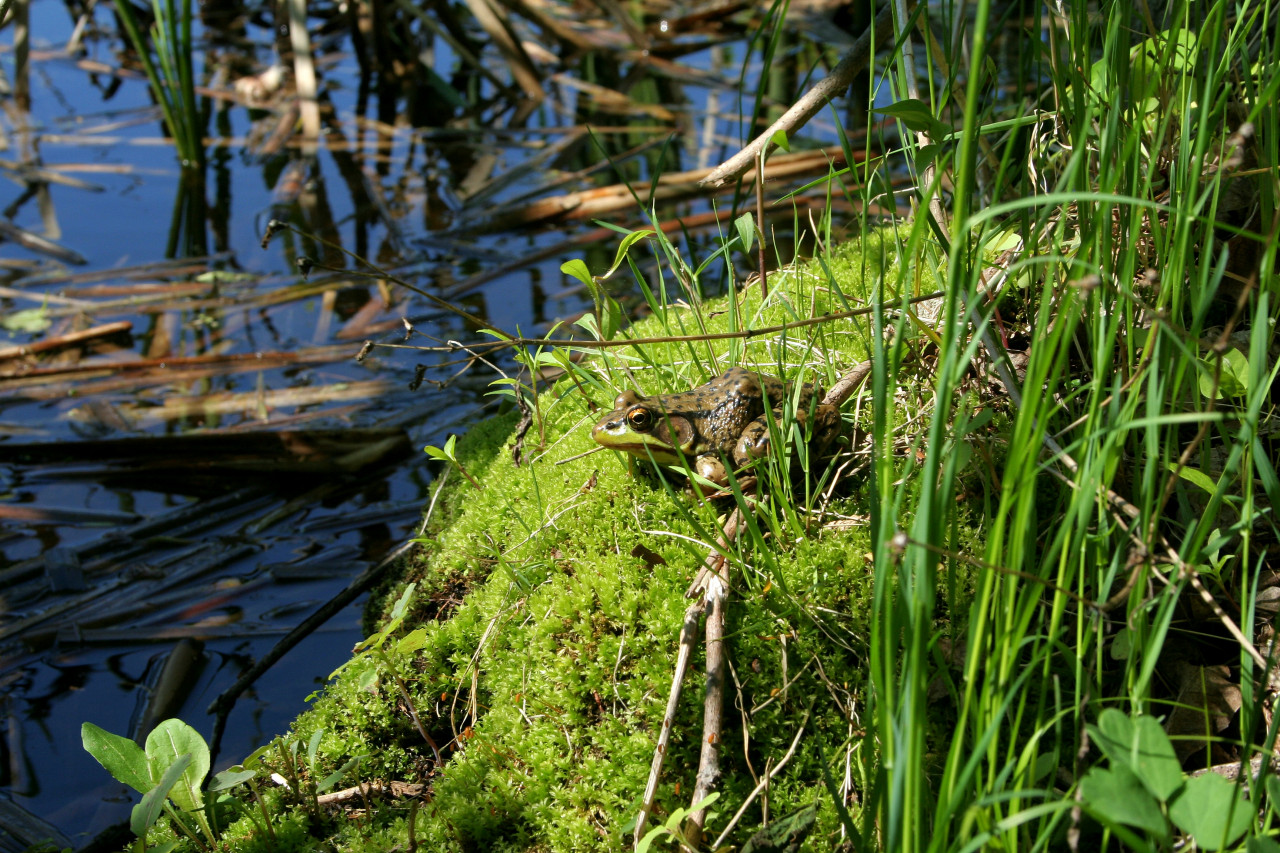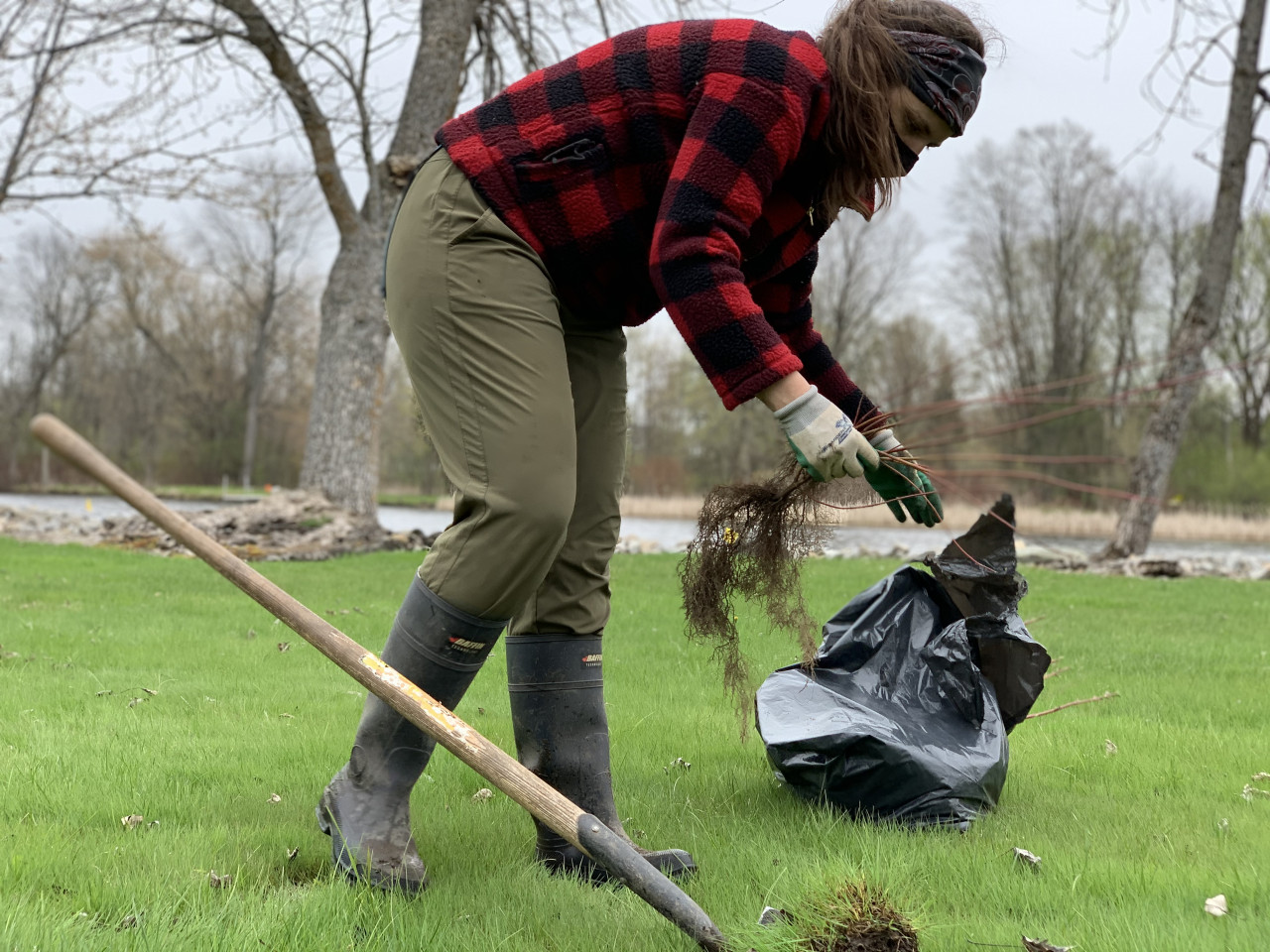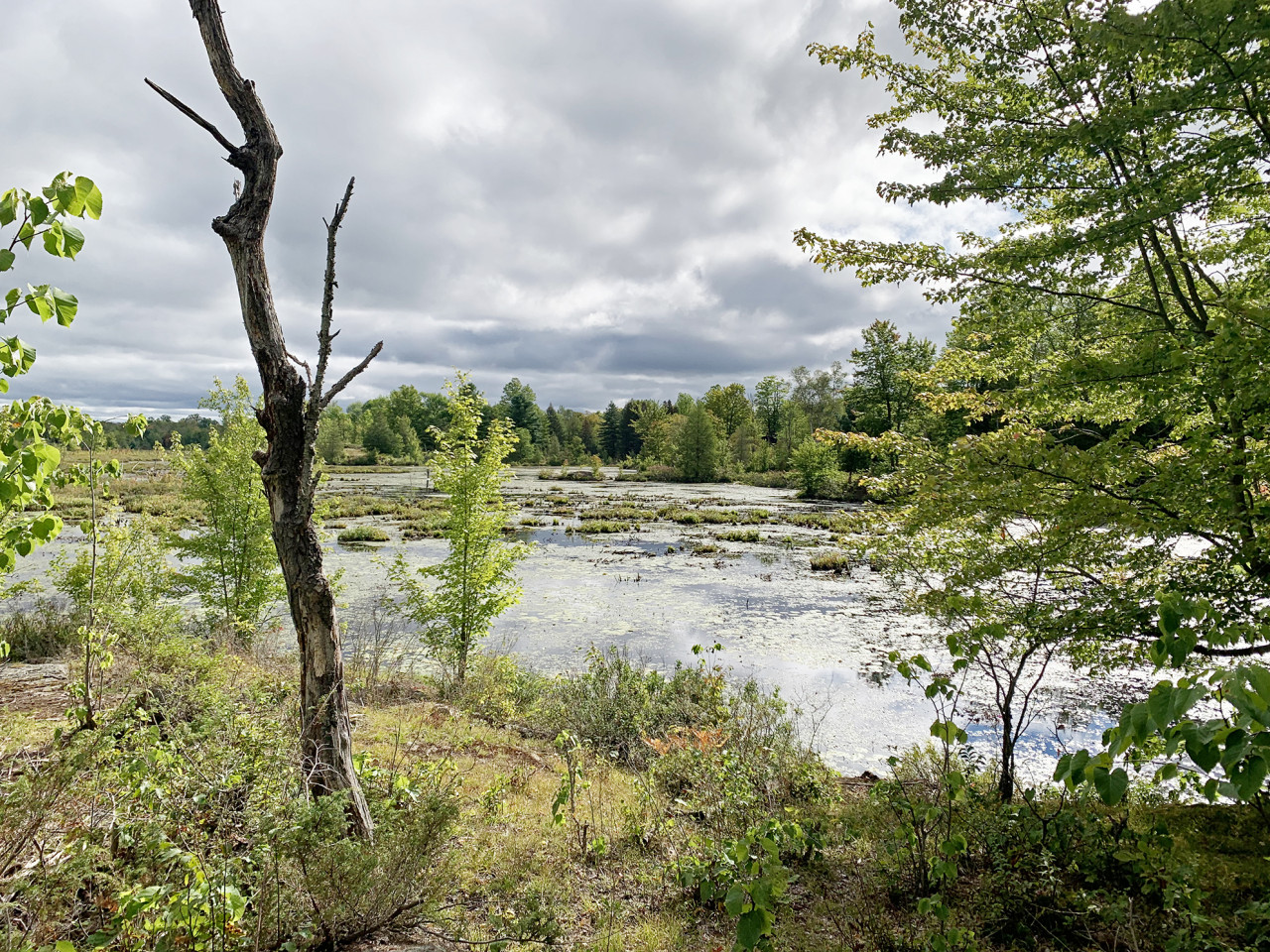Conservation Areas: Hard at Work for People and Planet
Imagine: it's mid-morning on a warm spring day. You follow a trail through a sun-streaked forest. Migrating warblers send trills through the treetops and delicate blossoms decorate the forest floor. You look up to see a red squirrel peering back at you, or, if you're lucky, a shy barred owl.
Passing through dappled sunlight and cedar-scented shadow, the trail leads to a thrumming wetland. There, the marshlands overtake your senses: cattails bowing to the gentle wind, turtles plunking off their sunbaked logs; red-winged blackbirds sending warnings from their reedy watchtowers.
The Rideau River laps at your feet while the blossoming sun warms your chest and fills your soul.
This is the web of natural beauty we enter when we visit a conservation area. We can feel it nourishing our body and minds - but it's also nourishing for the Earth.
Beyond our senses, these conservation areas are hard at work each and every day to protect us, our watershed and our planet.
The trees are busy capturing and storing carbon from the atmosphere, exchanging it for the oxygen we need to breathe.
Shoreline shrubs and plants are literally holding life and limb together: their woody roots are a powerful force against erosion, holding the bank in place while their boughs provide critical shade for the hundreds of creatures who live in the "ribbon of life" along the water's edge.
These trees and shrubs are also protecting our waterways from harmful pollution. As stormwater is slowed by their roots and shoots, the water soaks into the ground for filtration and purification before re-entering the water system.
This natural speedbump is also key to effective flood management, slowing stormwater to a manageable trickle.
The Rideau Valley watershed begins nearly 180 kilometres south-west of downtown Ottawa in the lake districts of Central Frontenac. The valley drains 4,000 square kilometres of creeks, lakes and rivers into the Rideau River – which in turn divides and defines the region before plummeting into the Ottawa River on route to the Atlantic Ocean.
Thousands of kilometres of shoreline along the Rideau's feeder lakes and tributaries wend their way through cottage country, rural and agricultural communities, and even urban Ottawa. Huge swaths of forests, swamps, and wetlands cover the region, reducing flooding and filtering contaminants out of the water for the benefit of everyone downstream.
Residents and landowners have the power to effect positive change for their beloved waterways. With help from our stewardship grants, landowners allow us to plant more than 200,000 native trees on their properties every year, for a total of 6.8 million trees since 1984.
Shoreline landowners also help us naturalize several kilometers of shoreline annually. And working with municipal and conservation partners, RVCA staff routinely restore dysfunctional or disconnected wetlands so they, too, can provide important flood management and water filtration services.
For urban residents, reducing runoff is an easy and effective way to keep the Rideau clean. Simple changes like installing a rain barrel, planting a sunken rain garden beneath your eavestrough and limiting the number of pesticides, fertilizers and other chemicals you apply to your lawn and gardens can make a huge difference.
This Earth Day – and every day – support and protect the natural systems that are working for us, the watershed and the planet. Learn more about grants and stewardship opportunities at www.RVCA.ca/stewardship-grants or make a donation to our charitable foundation at www.rvcf.ca.
When you subscribe to the blog, we will send you an e-mail when there are new updates on the site so you wouldn't miss them.





Comments